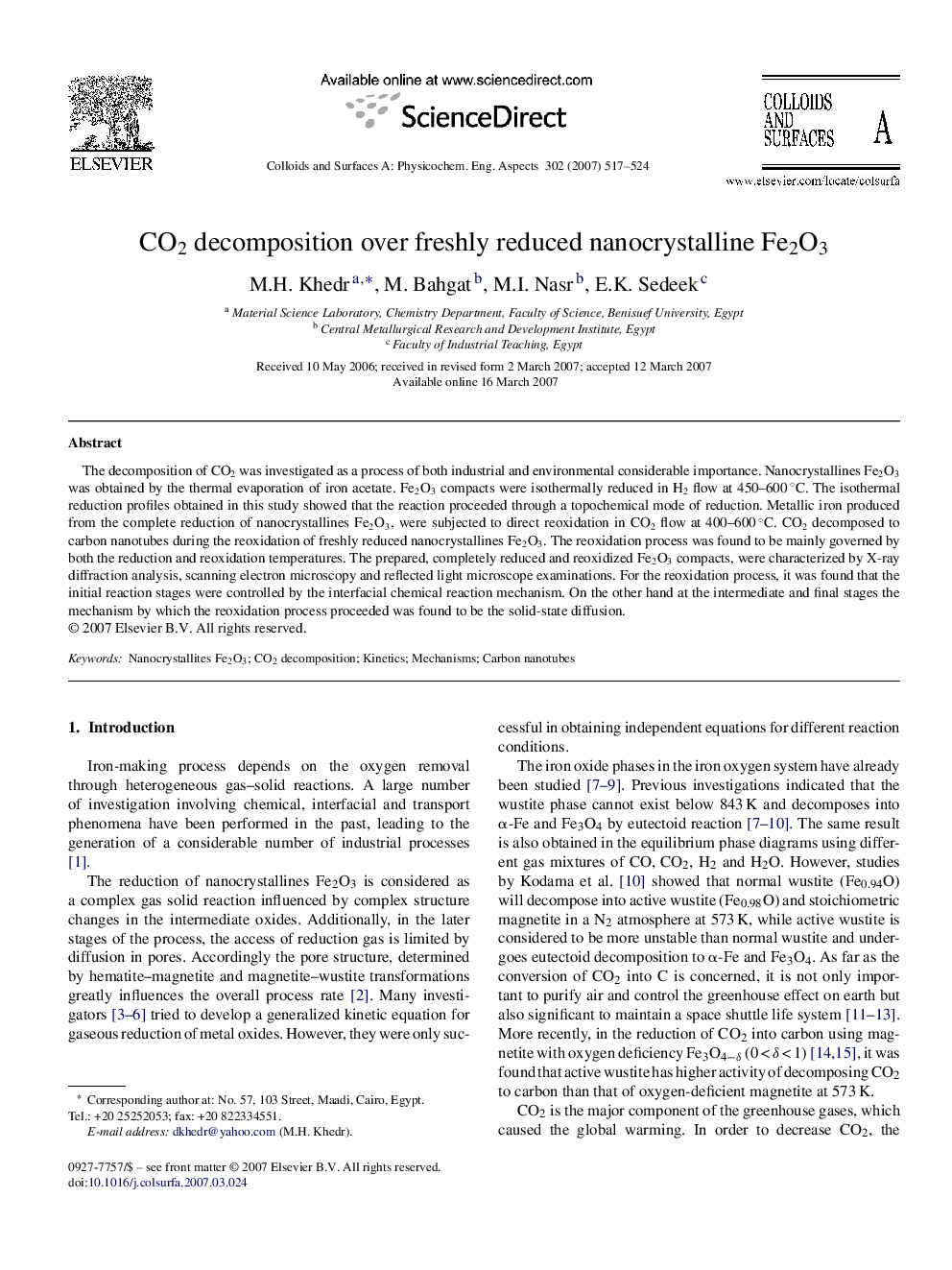| Article ID | Journal | Published Year | Pages | File Type |
|---|---|---|---|---|
| 597434 | Colloids and Surfaces A: Physicochemical and Engineering Aspects | 2007 | 8 Pages |
The decomposition of CO2 was investigated as a process of both industrial and environmental considerable importance. Nanocrystallines Fe2O3 was obtained by the thermal evaporation of iron acetate. Fe2O3 compacts were isothermally reduced in H2 flow at 450–600 °C. The isothermal reduction profiles obtained in this study showed that the reaction proceeded through a topochemical mode of reduction. Metallic iron produced from the complete reduction of nanocrystallines Fe2O3, were subjected to direct reoxidation in CO2 flow at 400–600 °C. CO2 decomposed to carbon nanotubes during the reoxidation of freshly reduced nanocrystallines Fe2O3. The reoxidation process was found to be mainly governed by both the reduction and reoxidation temperatures. The prepared, completely reduced and reoxidized Fe2O3 compacts, were characterized by X-ray diffraction analysis, scanning electron microscopy and reflected light microscope examinations. For the reoxidation process, it was found that the initial reaction stages were controlled by the interfacial chemical reaction mechanism. On the other hand at the intermediate and final stages the mechanism by which the reoxidation process proceeded was found to be the solid-state diffusion.
